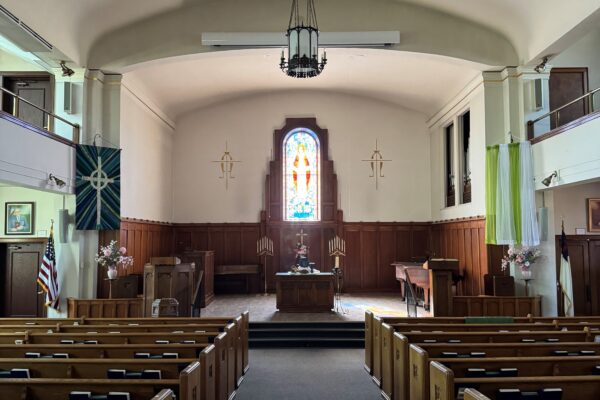
Symbolism of Christian Colors
White is the symbol of the Creator, light, joy, purity, and perfection. Green is the universal color of nature and symbolizes life. Purple/violet/blue are the colors of penitence and sorrow. Purple also represents royalty.
Red is the color of blood, and is used to symbolize Christians who died by persecution, it is also the color that represents the day of Pentecost. Black is the color of morning, yellow symbolizes glory and gold represents worth, virtue and the glory and power of God.
The Christ Window
The shape of the window points upward, so should our thoughts go upward to God. The central figure of Christ is the Risen Christ of the Resurrection. The clouds and rainbow are symbols of the Ascension.
He wears regal garments, standing above saints and sinners. The rich robe speaks of divine majesty, and his eyes look down upon us. The six angels represent the connection with Heaven, each one wears a slightly different robe, and all but one is in the posture of worship.
One inattentive cherub does not have both hands folded, he has only one hand up. The nimbus surrounding Christ’s head is a divine halo with the shadow of a cross through it. The triangle represents God the Father, Creator, Sustainer, Author of Life.
The sides of the triangle in this case, mean his character of Justice, Holiness and Mercy. The Dove is emblematic of the Holy Spirit, and is flying downward as a symbol of the Holy Spirit coming down to man.
Jesus is saying, “Come Unto Me,” with outstretched palms as an entreaty, and the stalks of wheat are the people of the earth who follow Christ. Grapes are used to designate the abundance or goodness of God and the red border denotes the blood of the martyrs who battled to establish the Kingdom of God on Earth. Lastly, the Chalice and bread are symbols of the Holy Communion.
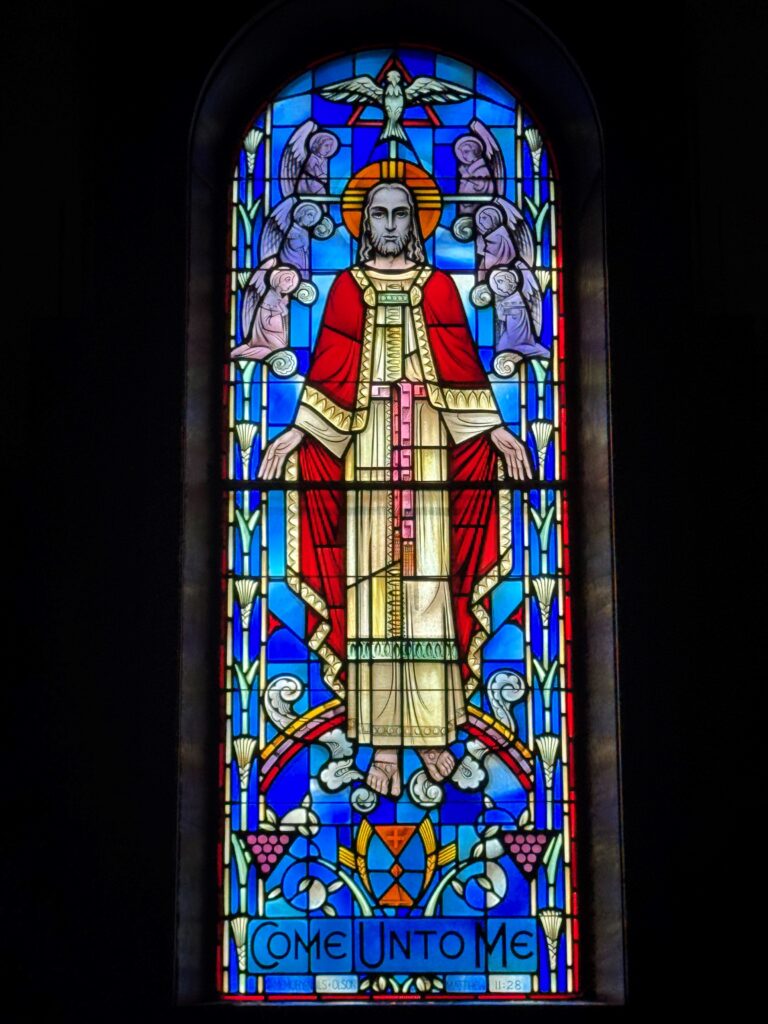
Our Saint Windows
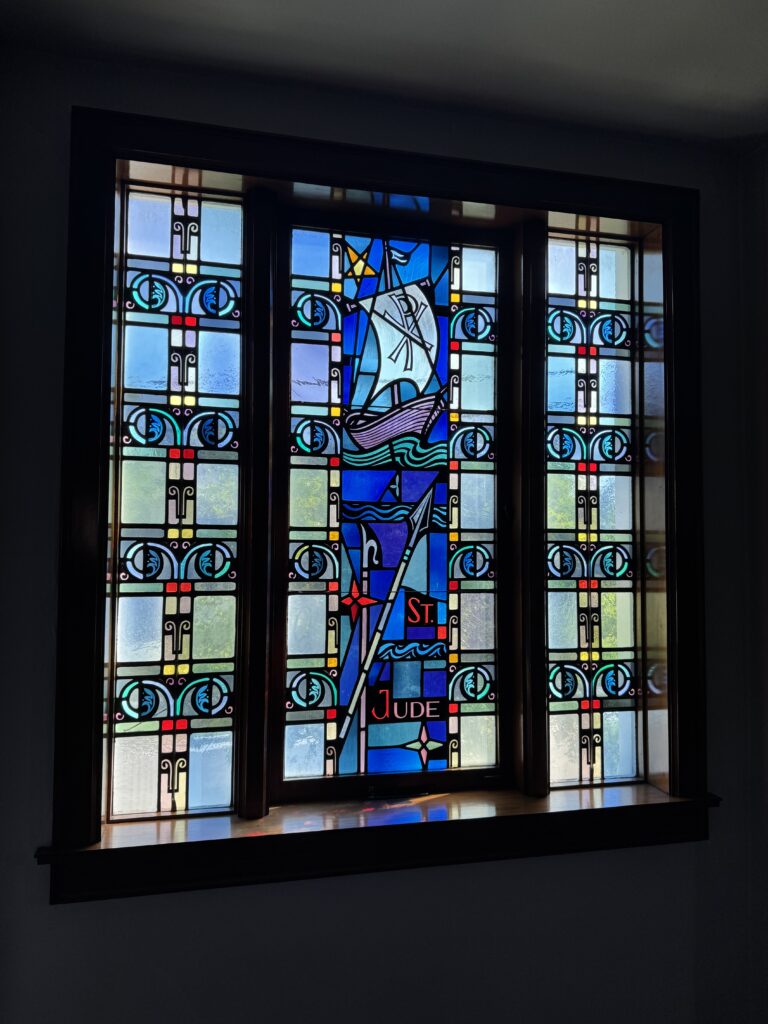
Saint Jude
The ship with the monogram of Christ is a symbol of his distant travels to spread the wisdom and faith of the church and the spear symbolizes his martyrdom.
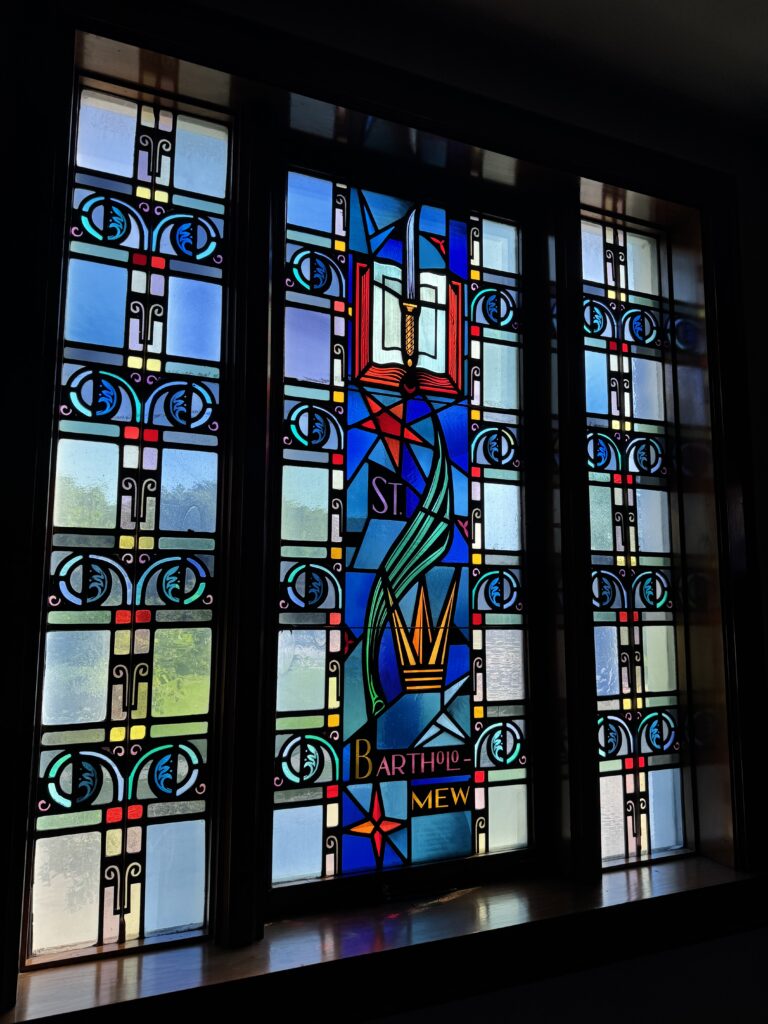
Saint Bartholomew
The open book shows his faith in God’s Word. The palm and crown symbolize his martyrdom, and the flaying knife symbolizes his death.
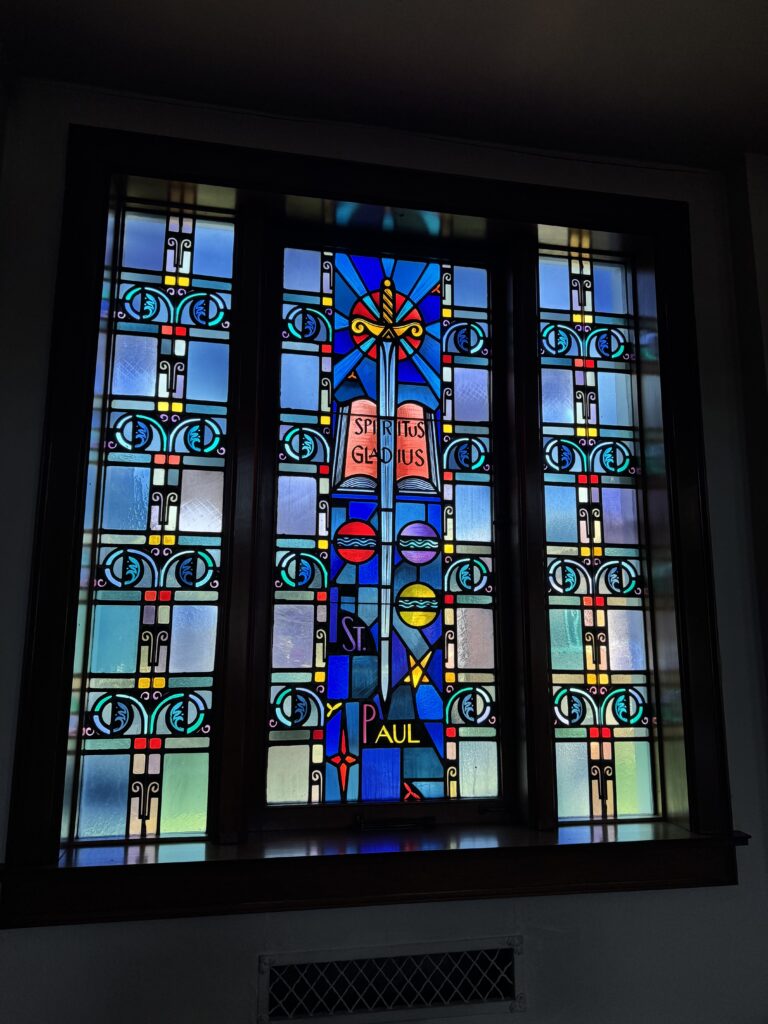
Saint Paul
The cross hilted sword lies upon the open Bible which is lettered with “Spiritus Gladius” which means “the sword of the Spirit” and the three globes represent his voyages.
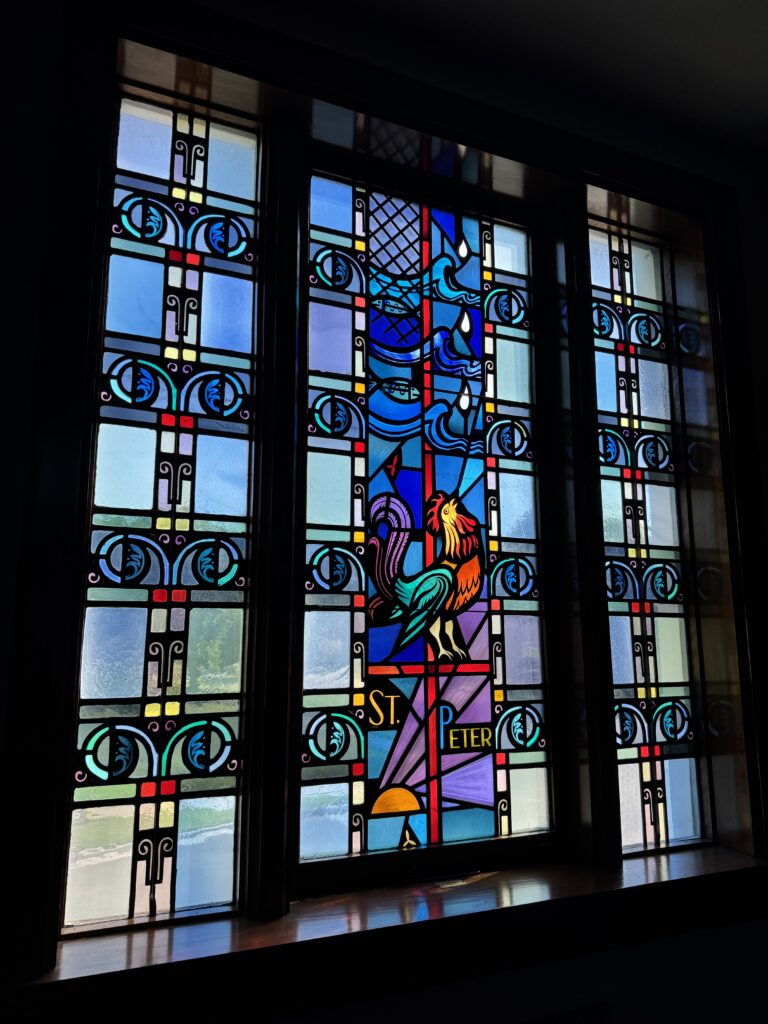
Saint Peter
Jesus told Peter to become a “fisher of men,” shown in the window by a fish with a net. The cock and the rising sun symbolize his three denials of Jesus, and the teardrops are for his great sorrow. The upside-down cross refers to his being crucified upside-down by the Romans.
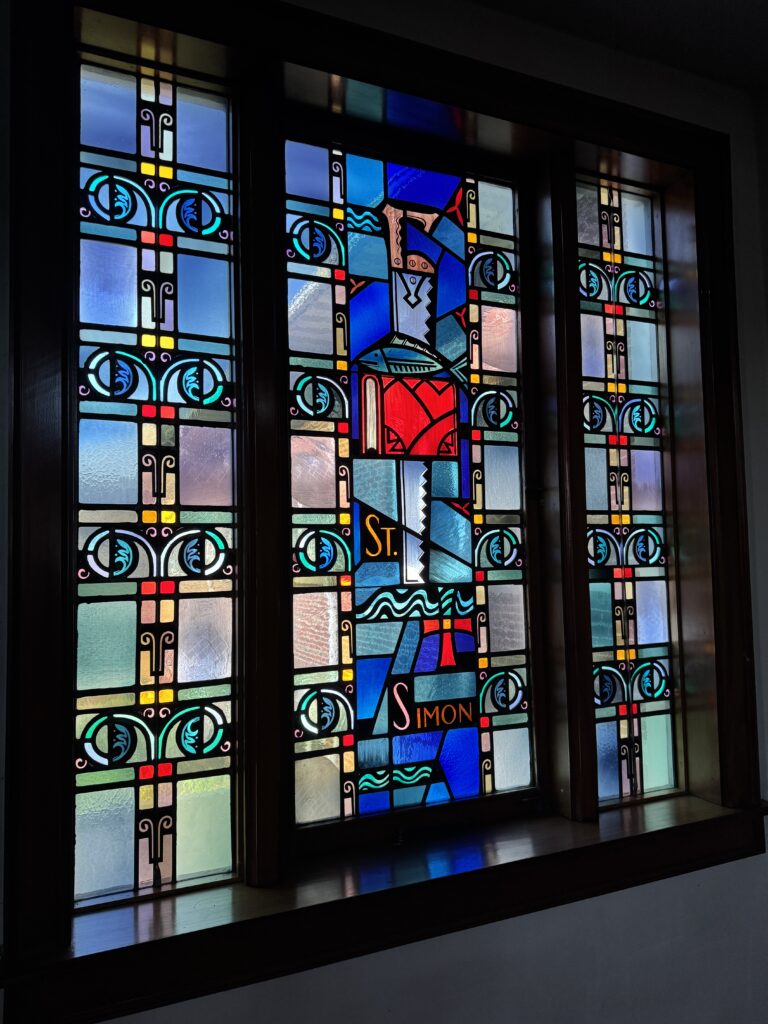
Saint Simon
A book upon which a fish lies is the symbol of his being a fisher of men during his travels with St. Jude, and his many conversions. The saw represents his being killed and sawed asunder.
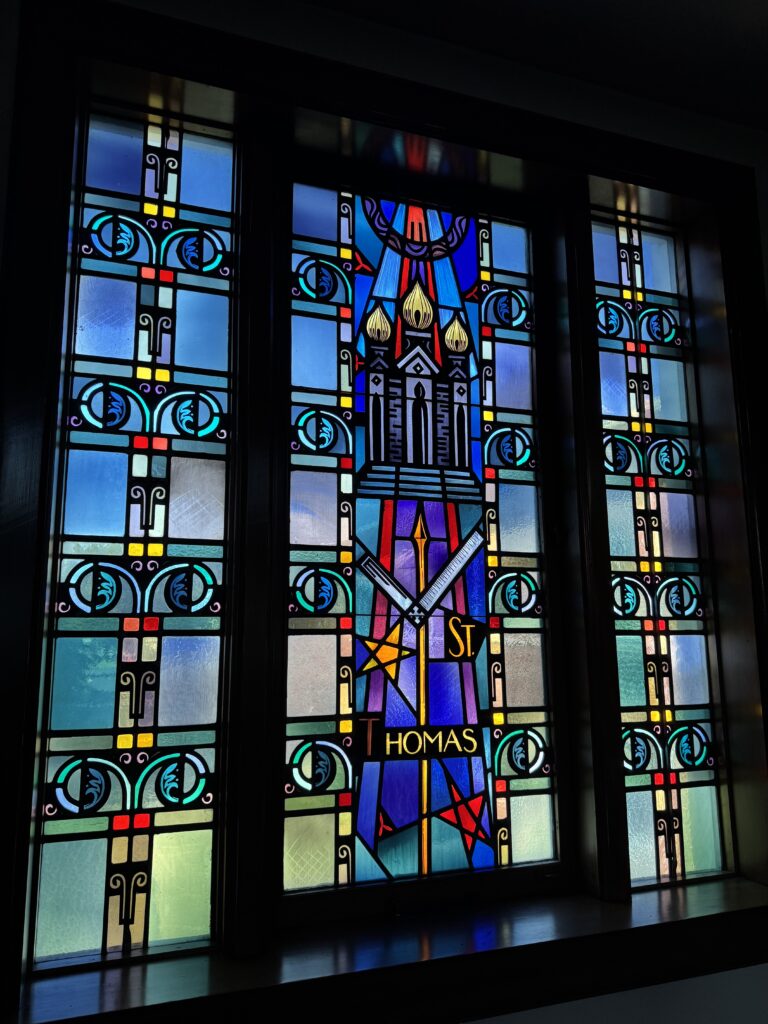
Saint Thomas
The architect’s rule and church symbolize a church at Malipur, India that he erected. The spear is for the wound in the side of Jesus by which St. Thomas identified him.
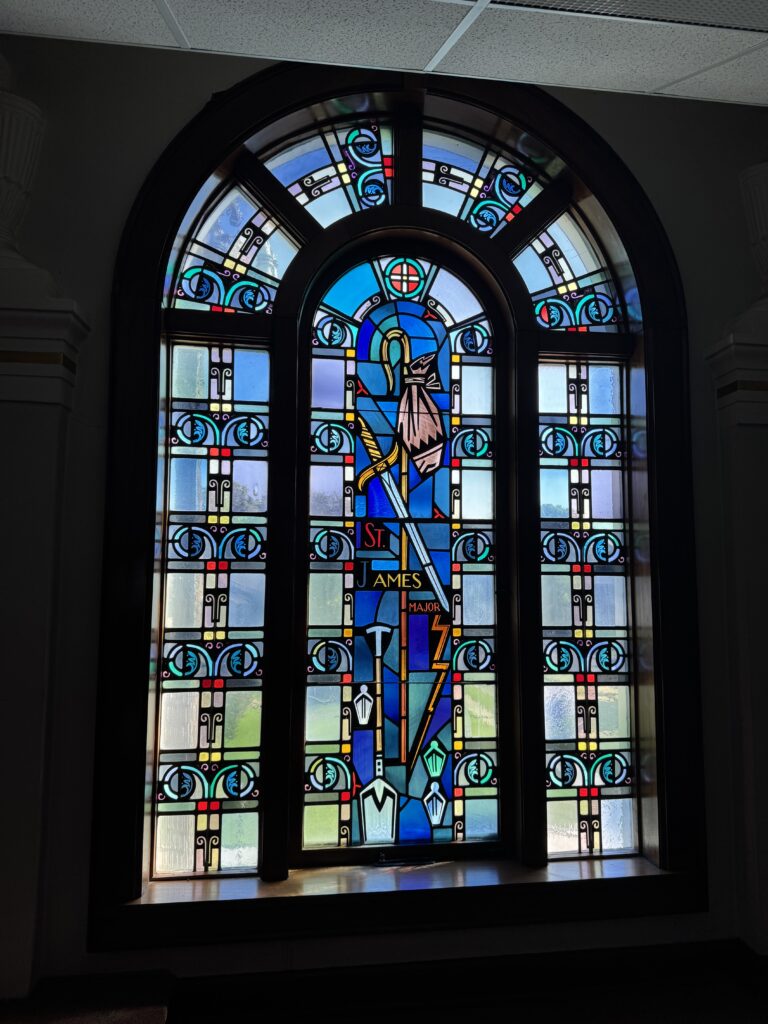
Saint James Major
The pilgrim’s staff is a symbol of many journeys and the scallop shells at the the bottom represent his many conversions. The sword and lightning bolt are symbols of his zeal, and the spade reminds us of his compassion for the working people. The man’s wallet on top of the staff is to be used to spread the good news of Christ.
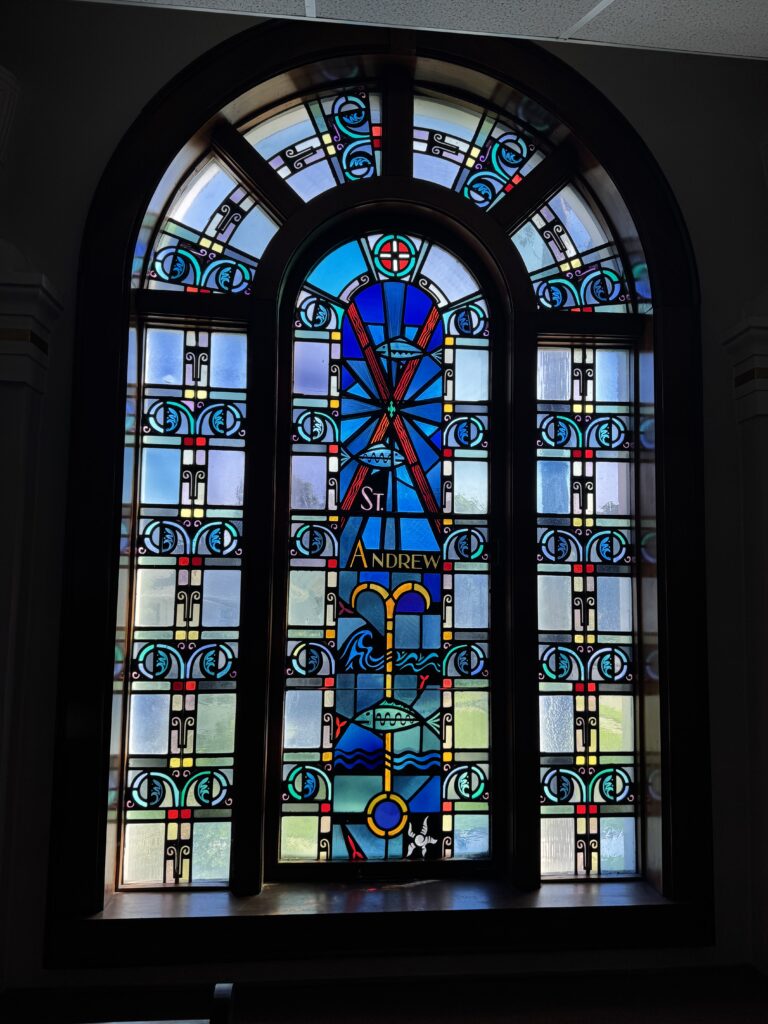
Saint Andrew
The fisherman’s hook and fish represent his occupation of fisherman. The cross saltire, also called St. Andrew’s cross, is in the form of an X, and is a symbol of his martyrdom. To prolong his suffering he was tied to the cross, not nailed.
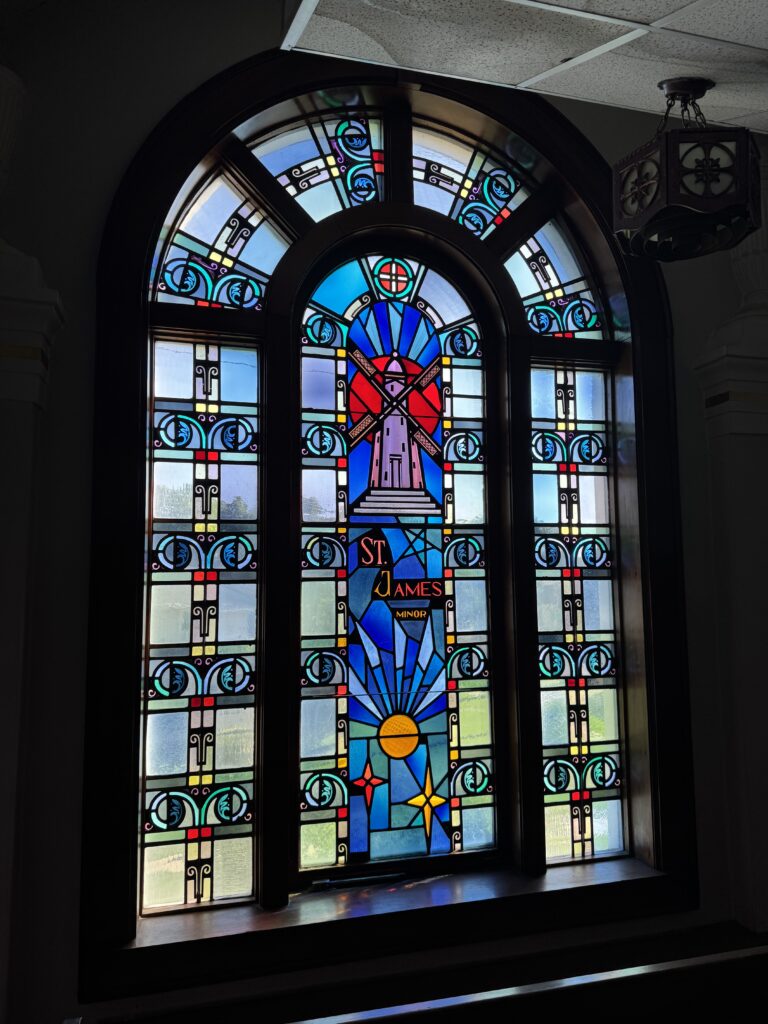
Saint James Minor
The windmill is a symbol of his faith and forgiveness of his enemies. He was pushed from the top of a temple, and his limbs resembled a windmill as he fell. He was seriously injured, but rose to his knees to ask God’s forgiveness of his enemies. The rising sun represents his presence at the Ascension, after which he began his extensive missionary journeys.
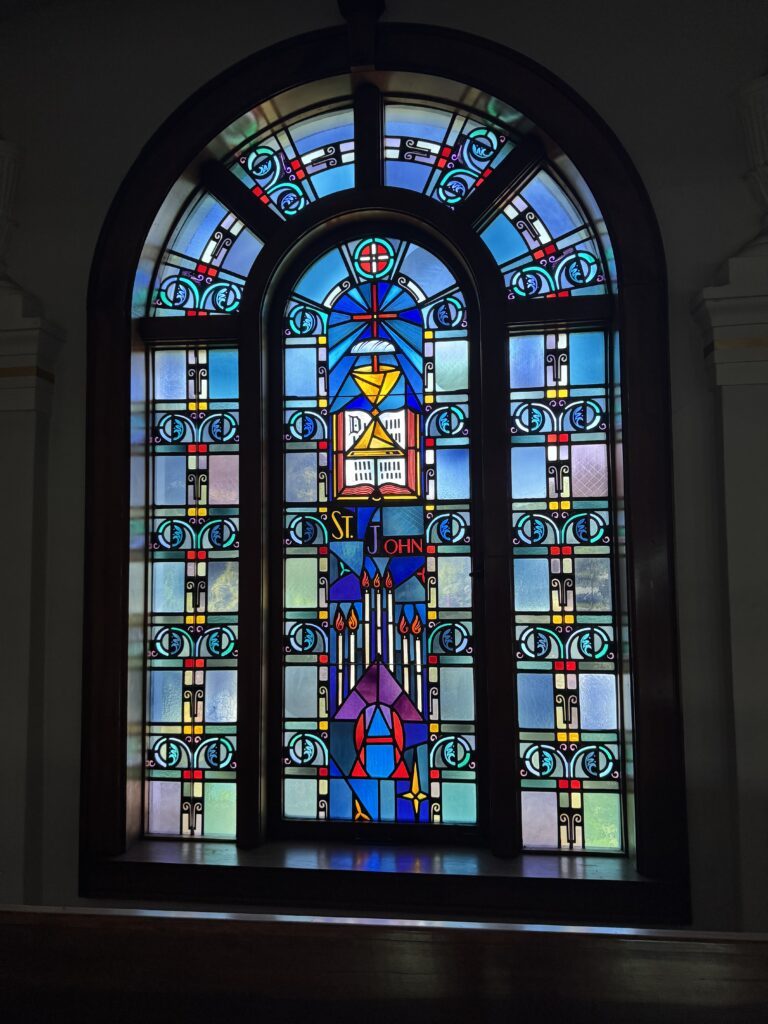
Saint John
The seven candles refer to the seven churches in the book of Revelation. The Alpha and Omega are from Revelation also. The cup and serpent represent his escape from death when the serpent drank the poison meant for him. “He ascended into Heaven” is lettered upon the open Bible, referring to his writing of the Ascension.
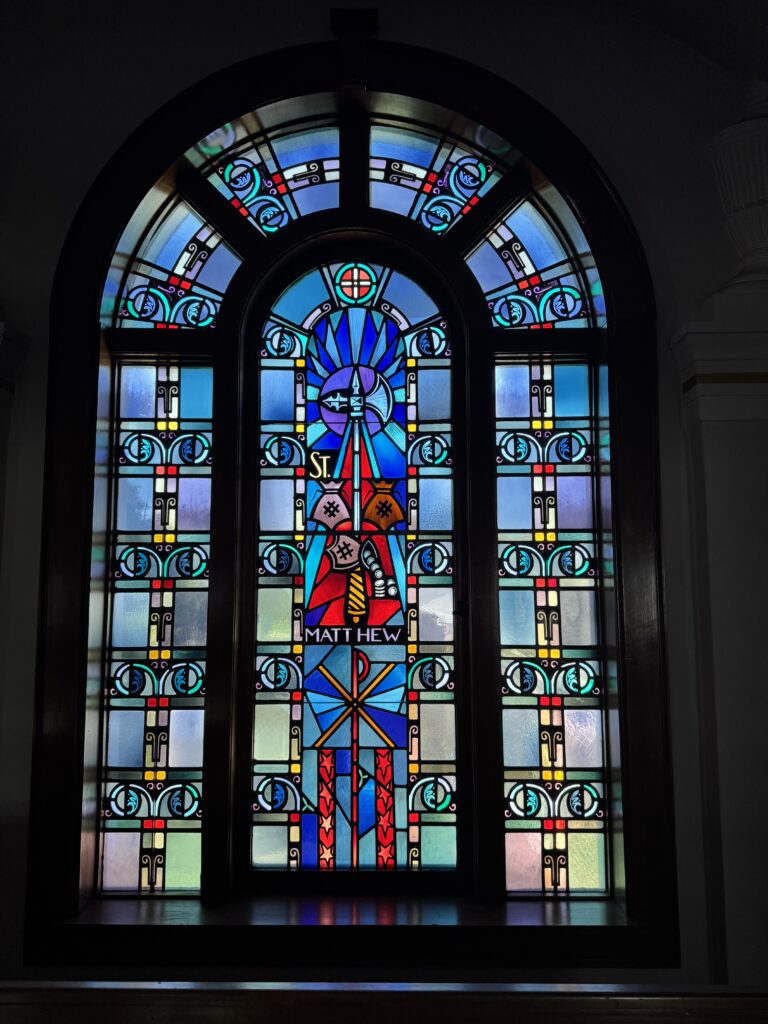
Saint Matthew
The moneybags represent his occupation as a tax collector, and the halberd, or battle ax, represent his death by decapitation. The PX symbol is the monogram of Christ, and the eight stars represents the Sermon on the Mount, with each star representing one of the eight Beatitudes.
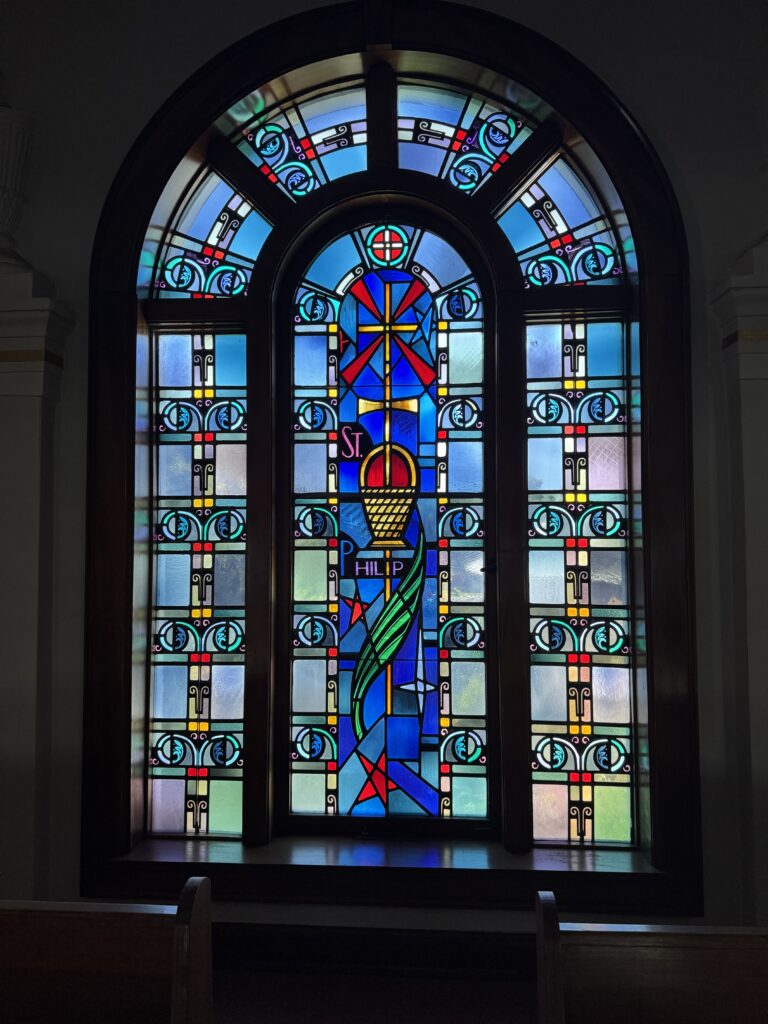
Saint Phillip
The loaves of bread and basket of fish symbolize that Phillip was with Jesus when he fed the multitude. The palm leaf represent his wavering in spiritual things. The Tau cross is the type upon which he was crucified and the tall patriarchal cross represents that he was one of the seven deacons.

